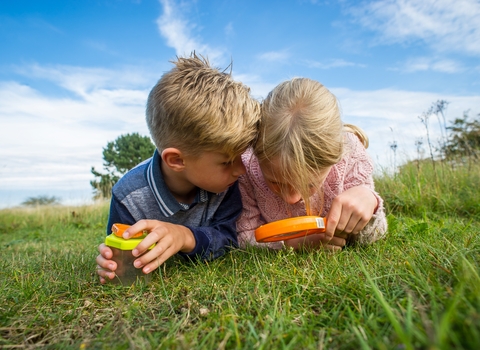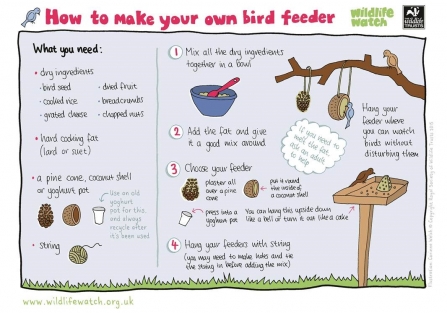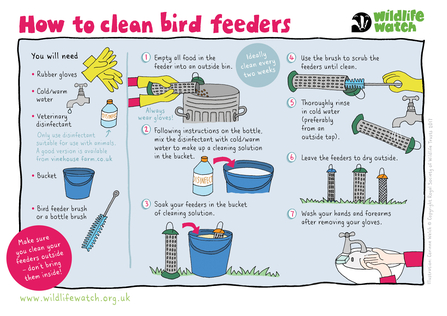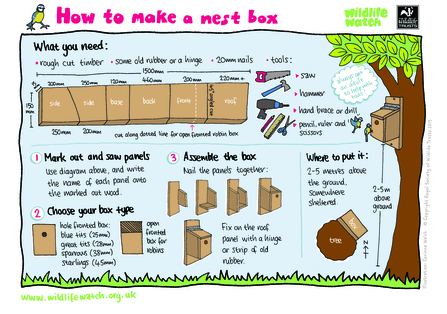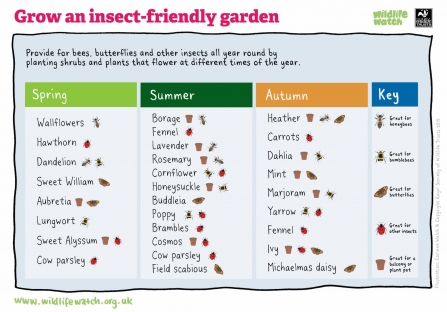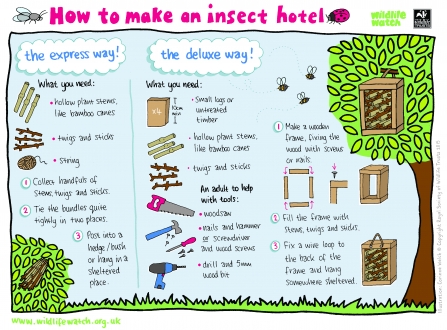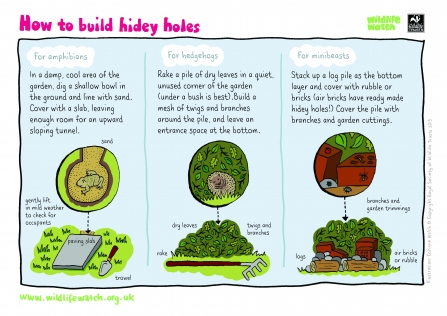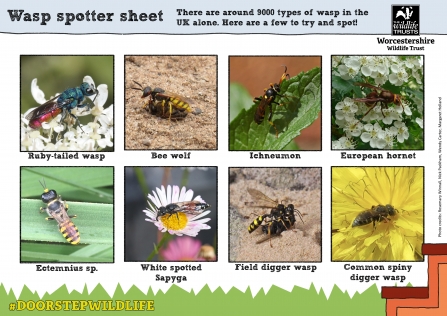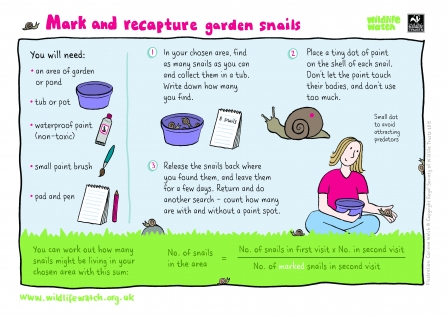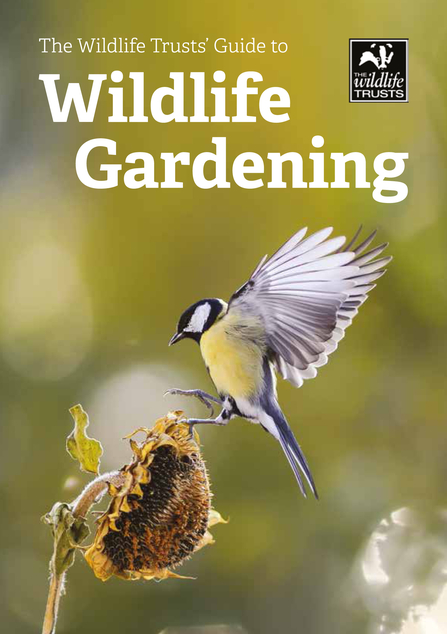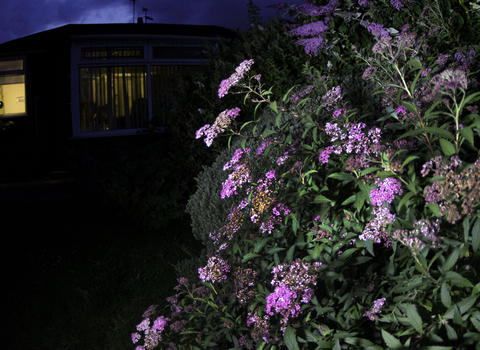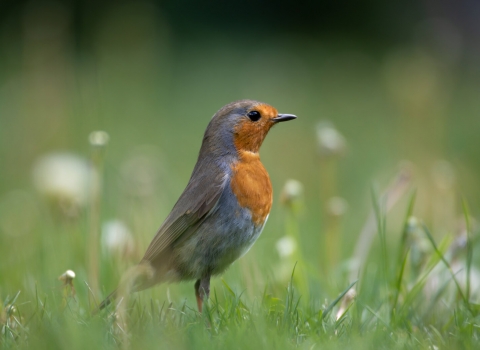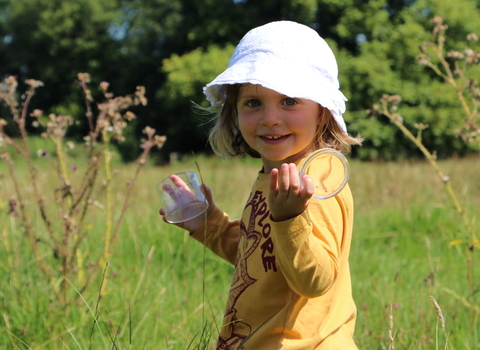Ever wondered what's fluttering at your window at night or what made the paths through the local field? Want to know more about the bees in your garden or the wriggly worms under your feet?
Being in nature is great for our physical and mental health and we believe that every child should have the chance to experience nature first-hand. Developing a connection to the natural world, whether through school or play, helps to expand enquiring minds and foster a love of the world that supports us.
Each year, through our work with schools and communities, we inspire thousands of children to love and protect their local wildlife. Hopefully we can help to inspire your children and grandchildren too.
We've got plenty of activities to help your family discover more about Worcestershire's amazing natural world. From learning how to identify birdsong or how to go on a bug hunt to tracking snails and making a Bug-ingham Palace for your local minibeasts. If you want to watch a video full-screen, just click on the broken square in the bottom right-hand corner of the video at any point.
Why not play wildlife bingo by downloading our wildlife spotter sheets or try your hand at helping wildlife as a family too.
Discover bees
Play our pollination game
We've designed a game just for you to learn about pollination. You'll need to get crafting before you start to play - you'll need a bee and a nest for each player as well as some flowers to gather your pollen from. Find out more...
Can you help bees in your garden?
We've got two challenges to get your family thinking about where bees might nest in and around your house and garden as well as what foods they might find. Download our challenges below then head outside and assess your wild patch! You might also want to take a look at our wild about bees page for more inspiration.
Let bees inspire your art
Whether your family is at the finger painting stage or a little more advanced with their artistic ability, why not take inspiration from our buzzing friends.
See like a bee
Bee eyes are made of thousands of lenses (called facets) that recognise colours and shades, helping the bee to interpret what it's seeing. They see in ultraviolet light, which we can't see without help, and it's been discovered that some flowers have developed ultraviolet 'landing pads' to help bees and other pollinators find their pollen. If you'd like to see like a bee, find out how to easily make pretend ultraviolet light with our short video...
Discover birds
Helping your garden birds
Worcestershire's wildlife needs our help. And help can start at home. Just click on the images to download our activity sheets.
How to watch birds
Watching birds can be done while you're out and about on a walk, from a birdwatching hide on a nature reserve, through the window in the comfort of your favourite chair or in your garden if you're hidden away.
What do birds sound like?
Learning birdsong can seem quite daunting but our short video helps you get to grips with some of our more common birds - the ones that you're likely to hear where you live. Once you've mastered these, why not go a little further and play our birdsong game (instructions below the video)?
How do birds eat?
It may seem an odd question because, surely, birds use their beaks to eat? But not all beaks are equal - find out more in Ben's short video and then have a go at playing our bird beak game.
Discover insects
What is an insect and how do you find them?
Creepy crawlies. Minibeasts. Bugs. Just three words that are commonly used to describe insects. But they're also used to describe other invertebrates (creatures without a spine) so what makes insects different? And just how do you go about finding them and learning more about them? Watch our introductory videos to find out more.
Explore like an insect
They don't have noses or fingers and toes like we do but, just like us, insects use touch and smell to navigate their way around the world. Find out more with our short video and then why not play our true and false game (or are you brave enough to play the game in the video)?
Helping insects where you live
It's easy to help insects in your garden, school or local greenspace. They need food to eat and places to snuggle into to rest and even hibernate. Just like us, they all have their favourite foods and places so offering a variety of these will help lots of different species. (Click on the images to download them).
Discover creatures of the night
What mammals might you spot?
When the light disappears and we head to bed, the night-time world comes alive. Why would wildlife emerge at night rather than during the day and what might you spot? Follow Ben on a night-time safari to find out more...including which nocturnal species has jazz hands!
You can find out more about what goes on while you're asleep on wild about bats and wild about hedgehogs pages.
Want to know more about our stripey-faced badgers? Learn about how they live and how to spot signs of them when you're out and about.
What moths might you spot?
When the sun goes down and night falls, moths come out to play. Some moths fly during the day but most fly at night and you probably won't bump into them unless you try to attract them to you. You could just hang about underneath an outside light but you might want to try a little harder...
If you're worried that attracting moths to a light in your garden will mean that your carpets will get eaten, don't! Take a look at Ben's moth myth-busters to find out more about this and about some of the moths that you might see flying during the day...
Before moths (and butterflies) become the beautiful fluttering insects that we know and love, their larvae are known as caterpillars. Lots of wildlife love to eat caterpillars so find out a little more about how they're able to defend themselves...
And just for fun, why not get creative at home and see if you can camouflage like a moth (or caterpillar)...
Discover ugly bugs
Why we should love wasps
If you think that our yellow and black picnic-bothering-pests are nothing more than that, take a look to find out why there's so much more to these pollinating predators...
You can also read our seasonal blog about the lives and importance of our social wasps.
You might be familiar with the black and yellow was that buzzes around your picnic but did you know that these are one of just nine species in the UK that do this? There are another c9000 species of wasp in the UK that look very different and are not at all bothered about your picnic. Why not see if you can spot some of them...
Why we should love biting bugs
Mosquitos, midges, horseflies...they've all got a bit of a bitey reputation. Just like all other wildlife, however, they deserve a bit of our love because they help to keep everything in balance. Find out more...
A bit of grub love
Unlike humans, many invertebrates spend more time as a larva than as an adult. This often makes the youngsters no more than feeding machines, leaving the adults with all the looks. Discover some of our ugliest bugs...
The secrets of snails
If you spend sometime in your garden or local greenspace you might have noticed that there are lots of different snails; they're not all living at the bottom of your garden munching on your prize lettuces. Discover more about these cool creatures that carry their homes around with them...
Ever wondered just how many snails there are where you live? Or whether it makes any difference if you pop them from your cabbages onto the nasturtiums? Why not try tracking them and see what you find...
Now you've learnt lots about some of your wild neighbours, how about giving them a big helping hand? You can visit our gardening for wildlife pages for lots of hints and tips, download your free wildlife gardening booklet or watch our short video below.
Want to know more about what you spot? Download some of our wildlife spotter sheets and see what you can find and identify.

